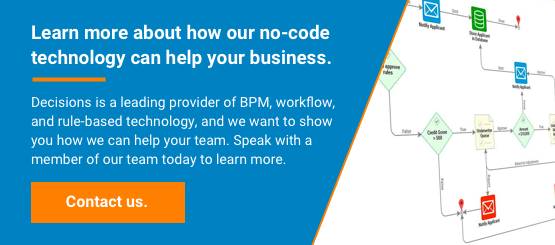How to Create an Application to Stay Compliant with the CARES Act
Blog: The Data Center

Between the reverberations of the stock market and the uncertainty of the scale and length of the coronavirus (COVID-19) pandemic, many businesses have been pushed close to their breaking points. Business owners have to constantly weigh the health and safety of their employees against complex pressures that come with making decisions that can help their operations stay afloat.
To help provide a critical lifeline to a wide range of businesses and blunt the impact to their bottom lines, the federal government passed the CARES Act tax relief legislation, which provides stimulus payments to individuals, expands unemployment insurance, and creates a range of business lending programs.
However, the many stipulations attached to the CARES Act’s lending programs are still being interpreted, which can cause future financial and administrative burdens for businesses once the public health crisis abates. To help businesses proactively prepare to track the many details tied to these relief funds, Decisions can help create software for tracking accounting changes, monitoring relief funding, and ensuring compliance with new standards.
One Law, Unique Business Challenges
When its loan programs and compliance standards were developed, the CARES Act attempted to account for a wide range of industries with an equally wide range of constraints and challenges. This means businesses are left trying to incorporate a one-size-fits-all solution into their multifaceted operations in order to comply with both the spirit of the law and their operational realities. And they’re doing all this, of course, using the processes and technology they already have.
Fortunately, with a platform like Decisions, you can create custom workflows with a pre-existing, comprehensive rules platform, interactive dashboards, end user portals, and APIs that ease system integration. Decisions can help your business and its unique operations meet the specificity of the CARES Act’s compliance and reporting standards without having to reengineer your existing business processes and systems.
Make Evolving Rules Actionable
As the many facets of the CARES Act are further defined by the Treasury Department, Small Business Administration, and federal regulators, the rules, provisions, timelines, and other requirements can quickly evolve into new standards that businesses need to track in order to remain in compliance. For example, there can be changes in the level of detail, time periods, formats, submission destinations, and auditing requirements that could throw rigid workflows into flux if organizations are not able to adjust.
In these situations, Decisions’ solution and methodology empowers subject matter experts to make changes to business flows, rules, and roles in real time without having to worry about any back-end coding. This way, when the ink finally dries on the CARES Act, businesses can feel confident that they are armed with the latest information needed to demonstrate their compliance—and business processes to match.
Be Ready for What’s Next
As organizations grow, industry standards evolve, and market conditions change, new compliance standards and requirements can come from anywhere. Having a standard template in place with basic business processes, workflow templates, and rules engines can allow your organization to remain nimble enough to quickly source, track, refine, and review key data as future hurdles arise.
This facet of a Decisions-based application can then be modified to capture key details that your organization needs to evaluate an opportunity, track new compliance requirements, and identify potential next steps that then feed into an existing process model.
Take the Next Step
The Decisions team wants your organization to know that we are ready to help you remain nimble in these complex times. In fact, the Decisions design team is standing by to provide seven-day digital sprints to break down your business or compliance challenges from idea to a minimum viable digital product or prototype with urgency. And, as standards evolve, our design team can quickly customize workflows to fit your situation, demonstrate potential functionality, and provide a set of action steps needed to take the prototype over the finish line and into production.
To learn more, contact the Decisions team so we can gather your requirements and quickly iterate user experience and business logic on the Decisions no-code automation platform.
The post How to Create an Application to Stay Compliant with the CARES Act appeared first on Decisions Blog.
Leave a Comment
You must be logged in to post a comment.









